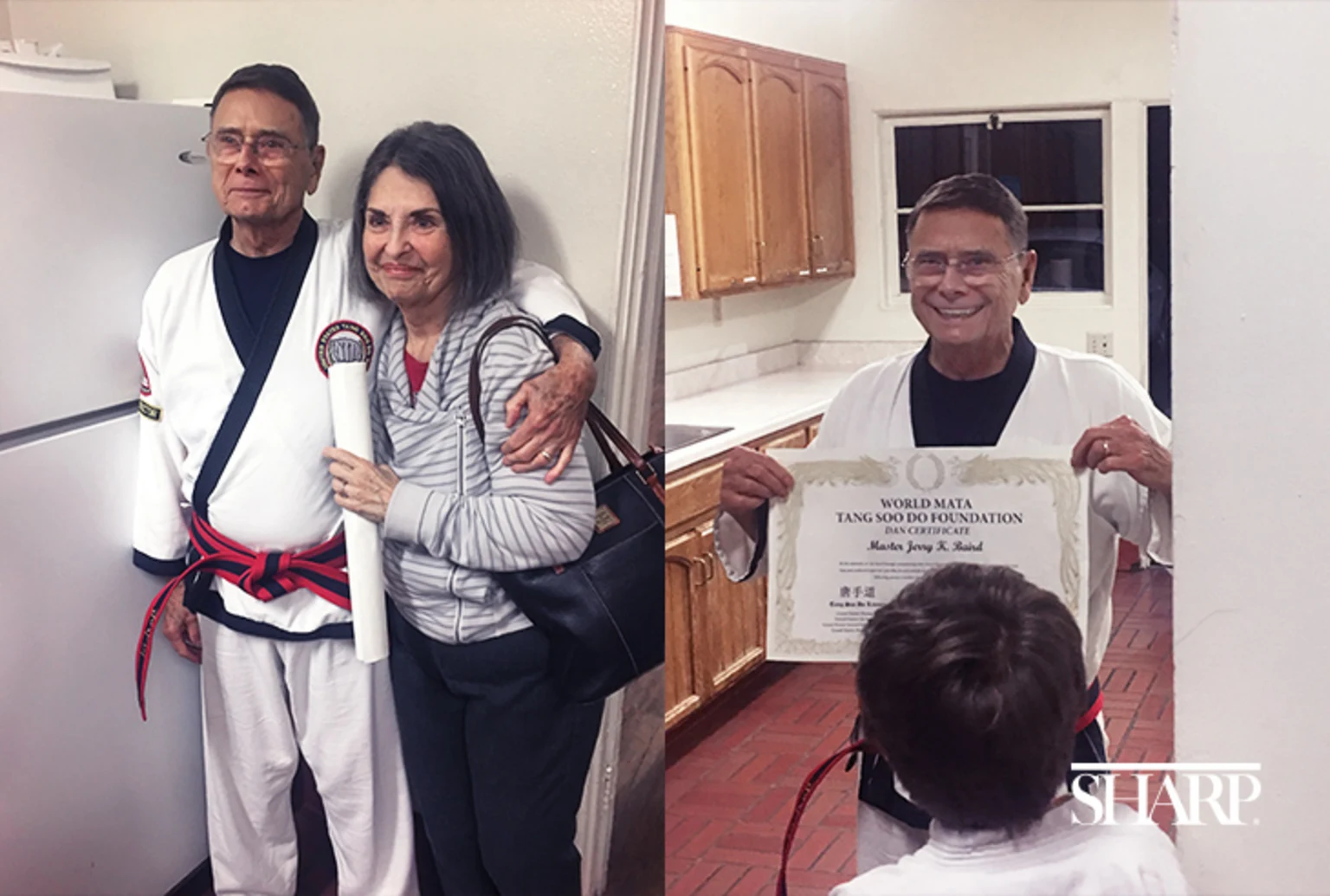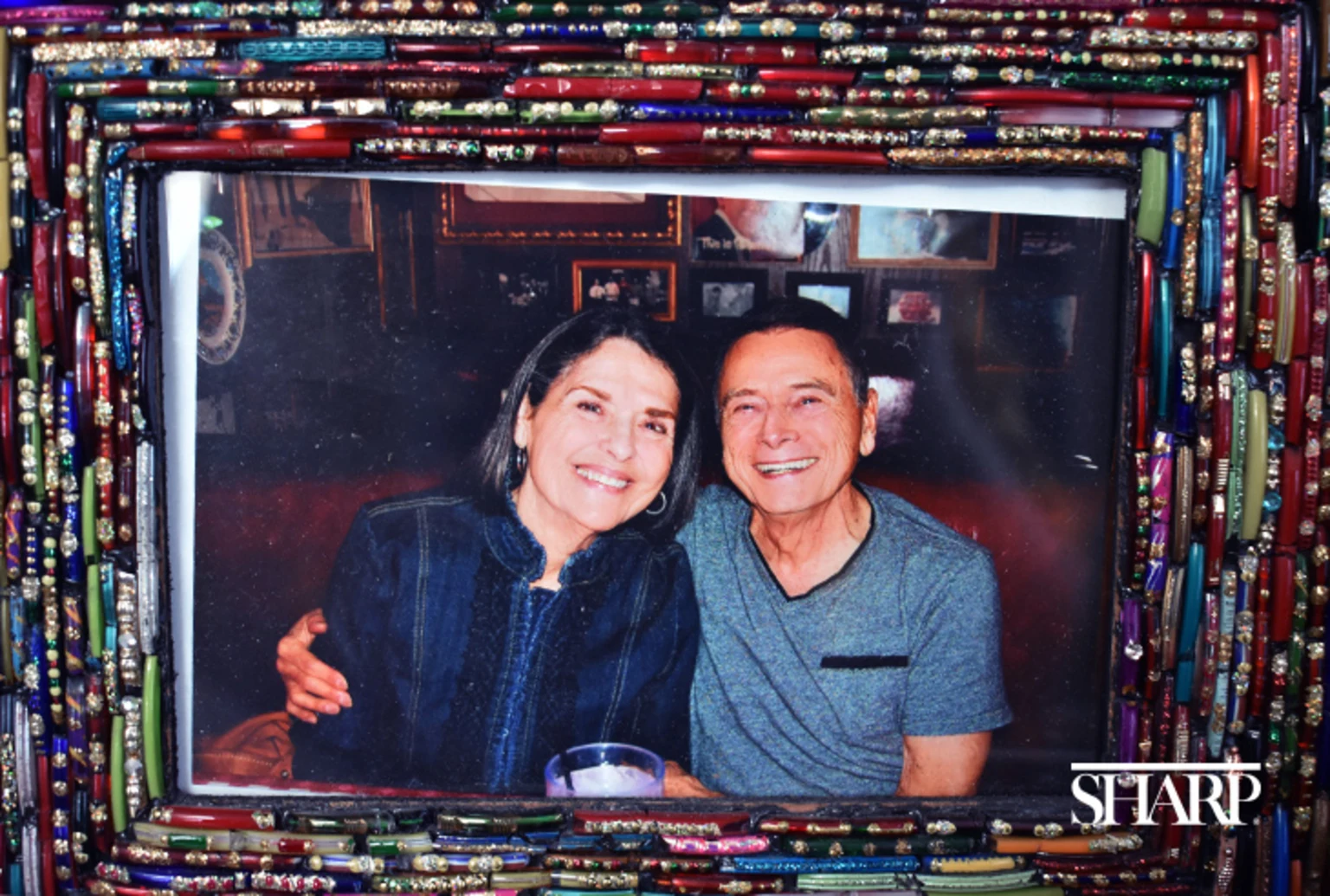
The holiday season brings spike in heart attacks
According to the American Heart Association, more people die from heart attacks during the last week of December than any other time of the year.
Jerry Baird and his wife, Linda, look like a pair of newlyweds sitting next to each other on their living room couch. They laugh easily at jokes, exchange sweet glances, and together tell the story of Jerry's long illness and journey to recovery.
"It's difficult to be both a caregiver and a wife," Linda says. "It's nice now just to be a wife."
It's been five months since Jerry, an 81-year-old retired Marine major, received a left ventricular assist device (LVAD) at Sharp Memorial Hospital. This lifesaving mechanical heart pump helps a weakened heart push blood to the rest of the body.
Now, Jerry's fingertips are no longer white from lack of circulation. He does not need oxygen at night and he can walk the short distances that used to leave him exhausted. He says his brain is working better, too.
"I'm so grateful to be moving on with my life," Jerry says. "I'm so grateful for everything."
A Marine with unknown heart disease
Jerry was close to death when he had heart surgery at Sharp Memorial to receive his LVAD. At the time, his ejection fraction — a measurement of how well a heart is pumping blood — was in the teens; anything below 50 is considered low.
His heart issues began 50 years earlier. While fighting in Vietnam, Jerry began to have fainting episodes. Doctors in Jerry's Battalion Landing Team (2nd Battalion, 26th Marines) wanted to send him to Japan to be tested, but Jerry convinced them to let him stay a few months until his deployment ended.
Once back at Camp Pendleton, doctors discovered that Jerry, who was 29 at the time, had a "bundle block" in his right ventricle. This condition affects the way electrical impulses travel through the heart to make it beat. It means the heart can't pump blood to all areas of the body that need it, which is why he was fainting.
A passion for martial arts
At the time, the bundle block seemed mild, so doctors said Jerry was still fit for duty. He went on to graduate school and focused on a passion he discovered while stationed in Japan before Vietnam: martial arts.
In graduate school, Jerry began taking Japanese karate, eventually earning his black belt. On a later deployment to Japan, he received a black belt in judo.
Jerry retired from the Marines after 25 years, and went on to have a series of careers in business. He was also raising two children, so he didn't have a ton of time to focus on martial arts. However, he always wanted to return to the sport, and in 1984 he started a judo club at a recreation center in Vista.
At 68, he began to practice the Korean martial art tang soo do, for which he later achieved a third martial arts black belt and master level.

Jerry earned his master level in tang soo do shortly before his heart surgery.
An expert team of doctors
Jerry's heart began to weaken considerably. He received his first pacemaker in 2004 to help control his heartbeat, a second one in 2012 and a third just a few months before his LVAD surgery.
His heart health continued to deteriorate, and Jerry's interventional cardiologist Dr. Ronald Goldberg, ultimately recommended he see cardiothoracic surgeon Dr. Brian Jaski at Sharp Memorial, one of the nation's leading experts in advanced heart failure.
"Dr. Goldberg really saved my life," Jerry says. "He knew I wasn't in great shape, and that I needed to see another specialist. He must have called Dr. Jaski the moment I walked out of his office. I got a call that I had an appointment with Dr. Jaski the next day, not knowing he was coming in on his day off just to see me."
Dr. Jaski and his team determined Jerry's heart disease had progressed to a point that a lifesaving LVAD was needed, and within just over a week, he was admitted to Sharp Memorial for the surgery.
Next chapter in life
With five months of recovery behind them, Jerry and Linda are slowly getting back to their normal lives. The couple, who married in 2008 after meeting online, have five adult children between them, as well as several grandchildren and a new great grandchild. Before Jerry's surgery, he was often too weak to leave the house. He also had to stop teaching and practicing martial arts.

A photo of Linda and Jerry a few years before his heart surgery sits in the couple’s living room.
But as he regains his strength, Jerry is ecstatic to spend more time with his family and resume martial arts. He recently returned as an instructor at a La Mesa recreation center community karate class. So far the LVAD, which is powered by an external battery pack that Jerry must wear at all times, hasn't been a bother.
In fact, a quick demonstration of how Jerry blocked a student's punch at that first class back from recovery proves that age and significant heart surgery have not affected his skills.
"Everything the doctors did for me, I just can't put into words," Jerry says. "I'm excited for this next chapter of my life."
The Sharp Health News Team are content authors who write and produce stories about Sharp HealthCare and its hospitals, clinics, medical groups and health plan.

Our weekly email brings you the latest health tips, recipes and stories.